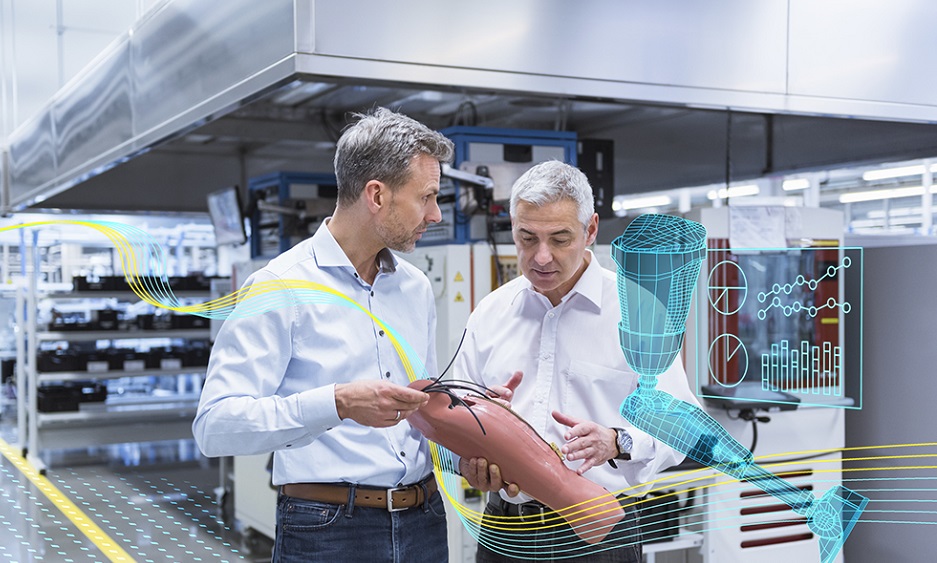PLM Teamcenter X provides cloud solutions for medical devices with substantial benefits

PLM for medical devices involves the entire product life cycle, including device design development, production, and regulatory submission.
Read the transcript of the fourth podcast in the Teamcenter X solution series as we discover the benefits of cloud solutions for medical devices: design, data management, product line management, and quality process management.
Alexandre Berthod, Global Marketing Manager at Siemens Digital Industries Software, and Ryan Bauer, Director of Medical Device & Pharmaceutical Solutions at Siemens, discuss the challenges of developing new medical devices and the benefits of PLM cloud solutions built on the Teamcenter platform.
Read the transcript

Alexandre: Hi everyone and welcome to this fourth session in the series of five podcasts on the impact of cloud and PLM on small and medium sized businesses. I’m your host Alexandre Berthod, Global Industry Marketing Manager for medical devices and pharmaceuticals at Siemens Digital Industries Software. Previously I worked for medical devices and individual diagnostic companies as a product manager. So, I’ve seen how it can be challenging to develop a new medical device.
That’s why I’m really convinced that Siemens has a great portfolio of software that perfectly matches with the current needs of the medical industry. Today I’m joined by my colleague, Ryan Bauer, Solution Director for the medical devices industry.

Hi, Ryan. Siemens has already recently launched a solution called PLM for Medical devices. Can you explain to us what this is at a high level?
Ryan: Sure. Morning, Alex. I’m super excited about this solution we’ve come out with. PLM for medical devices is a solution built on our Teamcenter platform for enterprise grade product lifecycle management, and it’s preconfigured to support core product development, quality, and regulatory activities for medical device companies.
I’m excited that it’s truly the opportunity to have this solution out there on the cloud, available for medical device customers that may not have been in reach for them before. It is putting some best practices in the industry built in.
Alexandre: Interesting. I better understand now what it is. I know that you are very enthusiastic about this new solution. Can you tell us why you are so excited about it?
Ryan: Part of the reason is I’ve been in this boat in my prior life before joining Siemens. I have worked as VP and director of R&D at a couple medical device companies and had the experience of working in a lot of paper systems or hybrid systems that were inadequate to support product development.
And when you are leading R&D, you need best practices and tools available for you to be efficient and compliant and not having it be expensive and time consuming.
In fact, one of the companies I worked for had a solution from a competitor that was what I would describe as paper on glass. We would save files and do revision changes and manage CAD, and things like that, but it was not handling the data structures for the design history file in the proper way. It made it difficult to do workflows and change releases. We wanted best practices of what was done in the industry to know from our vendor and be implemented on this system.
And unfortunately, our vendor didn’t have that experience, so we had to look around for other vendors and partners to help implement it.
Alexandre: This solution has really been developed with true expertise from the industry and real experiences in medical product development. But what is the value offering this on the cloud?
Ryan: So, by offering this on the cloud, we can do a lot of things that helps preconfigure it. So, how in product development it is now available from a best practice standpoint to everyone for performing preconfiguration at a basic level. It helps reduce the entry barrier, so the cost and time to implement PLM on the cloud and the medical device company (their business processes) is reduced. We offer some validation support within the industry software validation or computer software assurance, which is very important and can now offer upgrades too. So as the solution matures and best practice evolve, we can continue to offer that rapidly to the industry.
Alexandre: It’s clear that cloud offers real benefits for users, compared to an on premise solution, because it’s more convenient. Can you describe more precisely what is the scope of this solution?
Ryan: Sure, the solution focuses on three core areas at a high level. This is around design, data management, product line management and quality process management.
It starts by helping you manage your design data.
- You can monitor status and performance of your team and their deliverables.
- You can keep your data synchronized across domains.
- You’re looking at multi BOM for multi domain data management and CAD software. It is really connecting that design to the quality process.
Also, product line management helps you leverage this master or leverage the system of record to organize it in a way that matches your medical device, product lines, and all of the SKU structures and the bottom management. This helps you really stay organized for design transfer as well as communications with regulatory authorities.
Lastly, on the quality process management front, we have some advanced capabilities built in there that helps you map requirements and perform design trace work. There’s a framework in there for risk and importantly change control. So, you can coordinate efficiency across your organization and connect that history into your design history file in a databased way.
Alexandre: I understand that PLM for medical devices covers the need of all teams involved in the whole product life cycle, from the device design development to the production, and finally to regulatory submission. But what makes this offer industry-specific to medical device manufacturers?
Ryan: That’s a great question. So, I covered a lot of things at a high-level capability, but there’s some very specific things, and medical device manufacturers care about that. I think they are super important and exciting.
We’ve added a new capability around integrated risk management. We have risk management built out according to ISO 14971, which is a standard for the industry. They handle hazard analysis and connection into your requirements and testing for design trace. We also have another new solution around labeling and UDI.
Labeling is a big problem with the industry. It’s always been a top reason for recalls, and we have a structured way of managing your labeling content into different labeling tools as well as the coordination of UDI information into your product line and SKU management and the consumption of that data into your labeling as well.
Fourth, we have Kappa. Kappa is a super important process, always one of the first things that comes up in an audit. Kappa is not a paper exercise in its truest form. We have Kappa tied into the data structure of your device. So, it’s another example of paper on glass. A QMS system might handle it from a paper documentation standpoint, actually tying Kappa into your change control process, and into your actual data revisions, investigations, and that is all tied into a data workflow that synchronizes those activities together.
And then lastly, I previously mentioned validation support. One of the advantages of putting this on the cloud and having it available for pre-configured is that we can help offer some IQ and OQ documentation during the deployment-to-the-speed customers, and time-to-value.
Alexandre: Well, that that sounds fantastic, Ryan. I’m sure that our customers will be thrilled to receive the benefits from this customized solution that is fully designed to bring answers to specific needs of medical manufacturers.
Before I close this podcast, Ryan, do you have any additional thoughts on this topic?
Ryan: Yeah, I think same as doing a great job of continuing ongoing investment in the current capabilities of both. PLM at its core (and these best practices across industries) is beyond merely engineering. It encompasses additional business processes, and it helps collaborate some of the things I mentioned in the value of today, which are really important, not just for product development or engineering, but quality organization, regulatory organization and the marketing organization.
Whether it’s labeling your Kappa or even audit support, a lot of those business areas are going to have a vested interest in this and they would encourage you to talk about this with your partners within your organization, saying we can do better together if we collaborate on one the system of record here.
Alexandre: Great conversation, Ryan. Thank you again for joining me in this discussion about SaaS PLM for medical devices. And thanks to our listeners for joining us.
Siemens Xcelerator, the comprehensive and integrated portfolio of software and services from Siemens Digital Industries Software, helps companies of all sizes create and leverage a comprehensive digital twin that provides organizations with new insights, opportunities and levels of automation to drive innovation.
For more information on Siemens Digital Industries Software products and services, visit siemens.com/software or follow us on LinkedIn, Twitter, Facebook and Instagram. Siemens Digital Industries Software – where today meets tomorrow.


